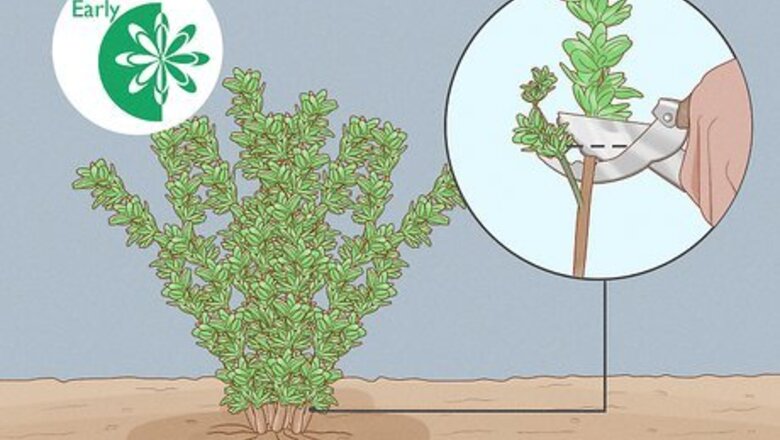
views
X
Research source
Pruning to Promote Healthy Growth
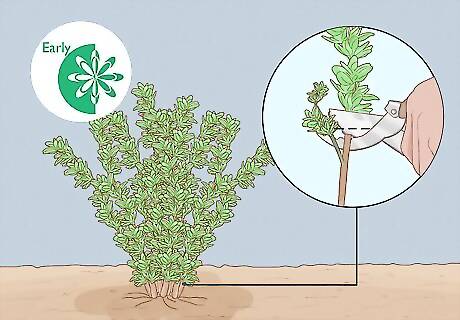
Prune thyme in the early spring once you see new growth starting. Look for the new growth at the base of the plant or from the lower stems.Once you notice new growth, use small garden shears or scissors to trim off about ⅓ of the oldest, woodiest parts of the plant. Do not trim the new growth. Trimming more than ⅓ of the plant will leave it too bare and can slow its growth and production, so take care not to cut off too much.

Snip fresh thyme stems throughout the season as needed for cooking. Use small garden shears or scissors to cut off 5 in (13 cm) sprigs to use in recipes. When choosing which stems to cut, try to choose ones that you can leave at least 5 inches (13 cm) of growth behind. This regular harvesting is all the pruning that is needed throughout the season. Trimming your thyme regularly will encourage more fresh growth and a more rounded shape.

Deadhead the flowers to maintain appearance and encourage regrowth. After the flowers bloom and fade, use scissors or your fingers to remove the dead flowers from the stem. Cut or pinch the stem just below the flower head, but above the first set of healthy leaves. Removing dead flowers allows the plant to focus its energy on producing new, healthy stems and growth, and keeps the plant looking alive and fresh.

Cut off the top third of the stems before the first frost to prepare for winter. Do this all-over pruning about 1 month before the first frost is expected to give the plant time to heal and slow its growth before winter. Use small garden shears or scissors to remove only the soft, green stems from the plant. Do not cut past the woody parts of the herb—this is where it the new growth will occur. Cutting the thyme way back will allow the herb to better withstand the winter weather and encourages new growth in the following season.
Harvesting Thyme to Use for Cooking
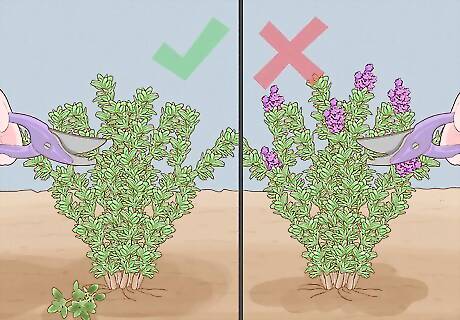
Harvest thyme just before the plant flowers for the best flavor. Once the plant begins to flower, the herb begins to lose some of its flavor and potency. The thyme can still be used after it flowers, just expect a milder flavor.
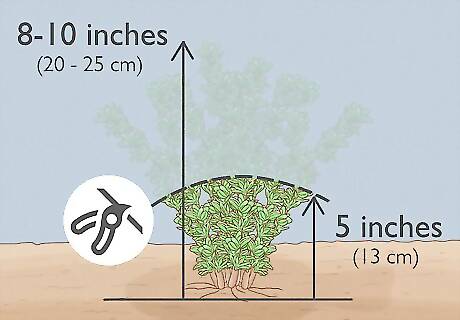
Cut the thyme when it reaches 8–10 inches (20–25 cm). Use scissors to snip just below the growth node where a new bud or set of leaves is forming. Only remove the fresh, green stems and leave the tough, woody part of the stems behind. Also be sure to leave at least 5 inches (13 cm) of growth so that the plant can continue to thrive. Cut the thyme in the morning after the dew has evaporated for the highest concentration of oils.

Wash the thyme in cool water. Hold the thyme under cool running tap water to rinse off dirt and insects. Shake off the excess water and pat the sprigs dry with a clean paper towel. Alternatively, you can hose your thyme plant off with a garden hose and allow it to dry for a couple hours before you cut the stems.
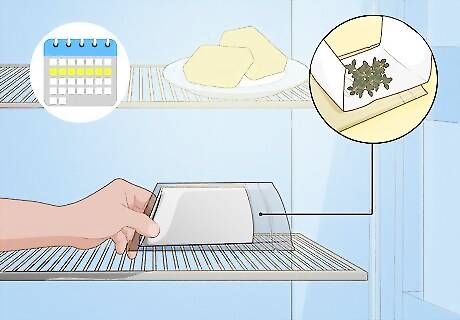
Store fresh thyme in a plastic bag in the refrigerator for up to 1 week. Fresh thyme tends to have the best, most potent flavor. Use the sprigs to flavor soups, stews, and meat, or use it as a garnish. You can make thyme oil, vinegar, or butter using fresh thyme sprigs.

Dry the thyme to preserve it for future use. Dry the thyme in a dehydrator, in the oven, or by hanging it in a warm, dry, dark place. Once the thyme is completely dried out, crumble the sprigs and place them in an airtight jar or container. Store the dried thyme in a cool, dark place for up to 4 years. To dry the thyme in a dehydrator, arrange the sprigs in a single layer on the racks in the machine for up to 2 days. Dry the thyme in the oven by placing the sprigs on a cookie sheet and baking them with the oven door propped open at 180 °F (82 °C) for 1-2 hours. To hang the thyme to dry, bundle about 4-6 sprigs together with twine. Hang the bundles in a warm, dry place out of direct sunlight for about 1 week.














Comments
0 comment